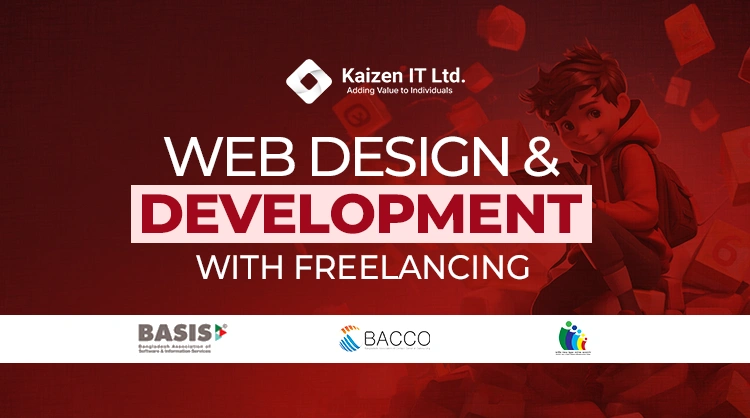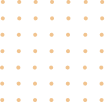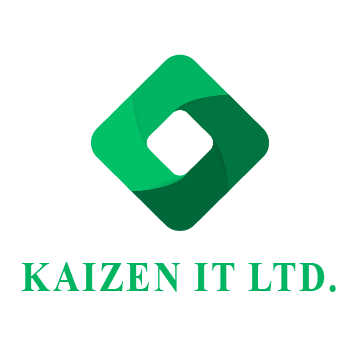Course Title: Web Design & Development Using PHP Laravel
Web design and development with Laravel combines creativity with powerful backend technology to build dynamic, scalable, and secure web applications. Laravel is a widely-used PHP framework that simplifies server-side programming and speeds up development by providing elegant syntax and built-in tools. By mastering Laravel, developers can create professional web applications that are easy to maintain and extend.
What we will learn in this course:
-
HTML5 এর valid structure with semantic element
-
CSS3 এর Secret টেকনিক
-
Standard JavaScript Practice ES6
-
Standard Bootstrap practice
-
Modern PHP Practice
-
Composer সম্পর্কে পরিষ্কার ধারণা এবং এর ব্যবহার
-
Object Oriented Programming সম্পর্কে পরিষ্কার ধারণা
-
MVC structure সম্পর্কে পরিষ্কার ধারণা
-
Laravel Framework এর বিভিন্ন Package এর ব্যাবহার
-
Laravel Framework দিয়ে একটি পূর্ণাঙ্গ Application ডেভেলপ করা.
-
E-commerce Project Development
-
Use Laravel as backend framework for any web application
This training program has been organized by Kaizen IT Ltd.
Training will be held at Kaizen IT Ltd Head Office.
Web design and development is a multidisciplinary process that combines creativity with technical expertise. Web designers focus on creating an engaging and user-friendly visual experience, while web developers bring that vision to life by building the backend functionality that ensures the site works smoothly. Together, they create a seamless, effective online presence for businesses, organizations, and individuals. Whether it’s a simple static website, a complex e-commerce platform, or a dynamic web application, web design and development are essential in building successful digital experiences.
This module covers the foundational concepts of websites, including their purpose, components, and different types. You'll also learn the key differences between static and dynamic websites.
-
Understanding Websites: Purpose and components, static vs. dynamic websites.
-
Core Concepts: HTML, HTML5, HTTP/HTTPS, URL.
-
Web Technologies: Website design tools, web browsers, and file extensions.
-
HTML Basics: Introduction to HTML syntax and its role in creating webpage structure.
-
Assignment: Create an HTML file and practice writing basic HTML code.
This module dives deeper into HTML syntax and best practices, focusing on creating a well-formed webpage with a clear structure.
-
HTML Syntax: Review of syntax, W3C standards, and proper use of heading tags.
-
Advanced Concepts: Differences between single and double tags, HTML comments, and the use of attributes.
-
HTML5 Tags: Introduction to new HTML5 tags and their importance.
-
Assignment: Create a complete webpage using various HTML tags learned in class.
This module focuses on using tables to structure content on a webpage, including both simple and complex layouts.
-
HTML Tables: Purpose, structure, and attributes for customization.
-
Layouts: Designing visually appealing table layouts.
-
Nested Tables: Understanding and creating complex layouts with nested tables.
-
Assignment: Design a table and a nested table layout.
You will learn how to create interactive elements like forms and lists, as well as incorporate external content.
-
HTML Lists: Creating ordered and unordered lists.
-
Forms: Designing forms for user input, using various input types, checkboxes, radio buttons, and select menus.
-
Advanced Elements: Incorporating iframes for external content and the marquee tag for scrolling text.
-
Assignment: Create a webpage that includes lists, a complete form, and iframes.
This module emphasizes the importance of using HTML5's semantic elements for better structure and accessibility.
-
Semantic Elements: Understanding the purpose and benefits of semantic tags like <header>, <footer>, <nav>, <article>, and <section>.
-
Usage: Proper usage of semantic elements for improved website structure.
-
Assignment: Create a webpage using HTML5 semantic elements to ensure proper structure and semantics.
This module serves as a review of all previous HTML concepts, culminating in the creation of a simple website layout.
This module introduces CSS (Cascading Style Sheets) as the language for styling webpages, covering the basics of syntax and the box model.
-
What is CSS?: Purpose and benefits, inline, internal, and external CSS.
-
Syntax and Selectors: Understanding CSS rules, declarations, and selectors.
-
Box Model: Understanding the box model and its properties: margin, padding, border, and content.
-
Assignment: Apply CSS styles to modify the typography and background of HTML elements.
This module focuses on various CSS properties for styling text, colors, and backgrounds.
-
Text Properties: Modifying font size, weight, style, family, alignment, and spacing.
-
Color Properties: Understanding color formats (hexadecimal, RGB) and applying colors to elements.
-
Background Properties: Setting background colors, images, size, position, and repetition.
-
Assignment: Apply various CSS styles to a webpage.
This module teaches you how to control the layout of a webpage using CSS positioning techniques.
-
Display Property: Understanding display values and block-level vs. inline-level elements.
-
Positioning: Exploring relative, absolute, fixed, and static positioning.
-
Floating: Applying floats for layout and using clear to prevent layout issues.
-
Assignment: Design and implement a webpage layout using CSS positioning and floats.
This module introduces modern and powerful layout techniques using Flexbox and Grid for creating responsive designs.
-
Advanced Box Model: Understanding the box-sizing property for predictable layouts.
-
CSS Flexbox: Introduction to flex containers, flex items, and properties for flexible designs.
-
CSS Grid: Introduction to grid containers, grid items, and properties for grid-based layouts.
-
Assignment: Implement Flexbox and Grid layouts to create responsive webpages.
This module covers how to add visual interest to webpages with animations and transformations.
-
CSS Transitions: Animating property changes with transition timing and easing functions.
-
CSS Transformations: Rotating, scaling, and translating elements using 2D and 3D transformations.
-
Assignment: Apply transitions and transformations to elements on a webpage.
This module focuses on creating websites that adapt to different devices and screen sizes.
-
Responsive Design: Introduction and importance of responsive design.
-
Media Queries: Targeting specific screen sizes and devices with media queries and breakpoints.
-
Techniques: Using Flexbox and Grid for responsive layouts, fluid grids, and flexible images.
-
Mobile-First: Understanding and applying a mobile-first design approach.
-
Project: Create a complete website that is responsive across different devices.
This module introduces Bootstrap, a popular CSS framework, to streamline the process of building responsive websites.
-
What is Bootstrap?: Purpose, benefits, features, and components.
-
Grid System: Understanding the Bootstrap grid system for responsive layouts.
-
Typography: Using Bootstrap's predefined CSS classes for typography.
-
Assignment: Create a responsive webpage layout using the Bootstrap grid system.
You will learn to use Bootstrap's pre-built components to quickly create common website elements.
-
Navigation Bar: Creating responsive navigation bars with dropdowns.
-
Buttons and Forms: Styling buttons and form elements, including form validation.
-
Alerts and Badges: Implementing alerts and badges for messages and notifications.
-
Assignment: Build a responsive navigation menu and stylized forms using Bootstrap components.
This module covers more advanced Bootstrap components for creating interactive and dynamic content.
-
Carousel: Creating image sliders and carousels.
-
Modals: Implementing modal windows for displaying content.
-
Tabs and Accordions: Creating tabbed content and collapsible sections.
-
Assignment: Implement a carousel and interactive modals using Bootstrap.
This module teaches you how to customize Bootstrap and culminates in building a complete responsive website using all learned concepts.
-
Customization: Overriding Bootstrap's default styles with custom CSS.
-
Themes: Applying Bootstrap themes for a consistent design.
-
Layouts: Creating different layouts and responsive design patterns.
-
Project: Create a complete responsive website using Bootstrap, incorporating various components and design techniques.
This module introduces JavaScript and its role in making websites dynamic and interactive.
-
What is JavaScript?: Introduction and significance in web development.
-
Environment: Setting up a JavaScript development environment.
-
Syntax: Basic syntax, variables, constants, and data types.
-
Operators: Exploring different operators for mathematical and logical operations.
-
Control Flow: Implementing conditional statements (if-else, switch) and loops (for, while).
You'll learn about functions to write reusable code and work with data structures like arrays and objects.
-
Functions: Creating, invoking, and understanding function scope and closures.
-
Arrays and Objects: Introduction to arrays and objects, including manipulation and methods.
-
DOM Manipulation: Accessing and manipulating HTML elements using JavaScript.
-
Events: Handling events and creating interactive web applications.
This module covers advanced JavaScript concepts like asynchronous operations and error handling, culminating in a dynamic web application project.
-
Asynchronous JavaScript: Introduction to asynchronous programming and Promises.
-
Error Handling: Identifying and handling JavaScript errors and debugging techniques.
-
Project: Build a dynamic web application using JavaScript, incorporating DOM manipulation, asynchronous operations, and error handling.
This module introduces jQuery, a JavaScript library that simplifies common tasks like DOM manipulation and event handling.
-
What is jQuery?: Introduction, benefits, and basic effects (hide/show, slide, toggle).
-
Plugins: Integrating and using popular jQuery plugins (e.g., for sliders).
-
Form Validation: Validating forms and loading dynamic content with AJAX.
-
Project: Create an interactive web application using jQuery, plugins, and UI enhancements.
This module introduces PHP as a server-side scripting language for building dynamic websites.
-
Web Development Concepts: Client-side vs. server-side, basic web development tools.
-
PHP Basics: PHP coding structure, variables, comments, and concatenation.
-
Operations: Arithmetic operations, functions, and constants.
-
Control Flow: String functions, conditional statements (if-else, switch), and loops (while, for).
This module focuses on working with data in PHP, including arrays, forms, and file handling.
-
Arrays: Introduction to indexed, associative, and multidimensional arrays.
-
Forms: Handling form submissions, validation, and using super global variables ($_POST, $_GET).
-
Date and Files: Working with date/time functions and basic file handling.
-
Project: Build a dynamic web application with PHP that incorporates form submission, data processing, and file handling.
You will learn to manage databases with SQL and connect them to your PHP applications.
-
SQL and MySQL: Introduction to SQL, creating databases and tables in MySQL.
-
CRUD Operations: Overview of Create, Read, Update, and Delete operations in PHP.
-
User Management: Building a system registration and login form.
-
PHP Sessions: Understanding and implementing PHP sessions for user authentication.
-
Project: Build a user management system with registration, login, and basic data management.
This module introduces Laravel, a powerful PHP framework for building robust web applications.
-
What is Laravel?: Introduction to frameworks, Laravel, and the MVC architecture.
-
Setup: Setting up the local environment, Composer, and the CLI.
-
Project Structure: Overview of the Laravel folder structure and Artisan commands.
-
Routing: Understanding and creating your first route in Laravel.
You will learn to build the core components of a Laravel application.
-
Views and Blade: Creating views and using the Blade templating engine.
-
Controllers: Creating controllers and passing data to views.
-
Forms and Database: Handling forms, performing logical operations, and connecting to a MySQL database.
This module focuses on using Laravel's powerful Eloquent ORM for database interactions.
-
Models and Migrations: Understanding models and using migrations to create database tables.
-
Database Operations: Inserting, reading, updating, and deleting records using Eloquent.
-
Authentication: Implementing basic authentication and middleware.
-
File Uploads: Uploading images and files using Laravel File Storage.
This module covers more advanced Laravel features and prepares you for deploying your application.
-
DataTables: Using the DataTables library for enhanced data presentation.
-
Relationships: Understanding one-to-one and one-to-many relationships.
-
Deployment: Explanations of domain, hosting, Cpanel, and deploying your application to a live server.
-
Project: Build a fully dynamic website with user/admin registration, login, and a dashboard for management.
















.png)










